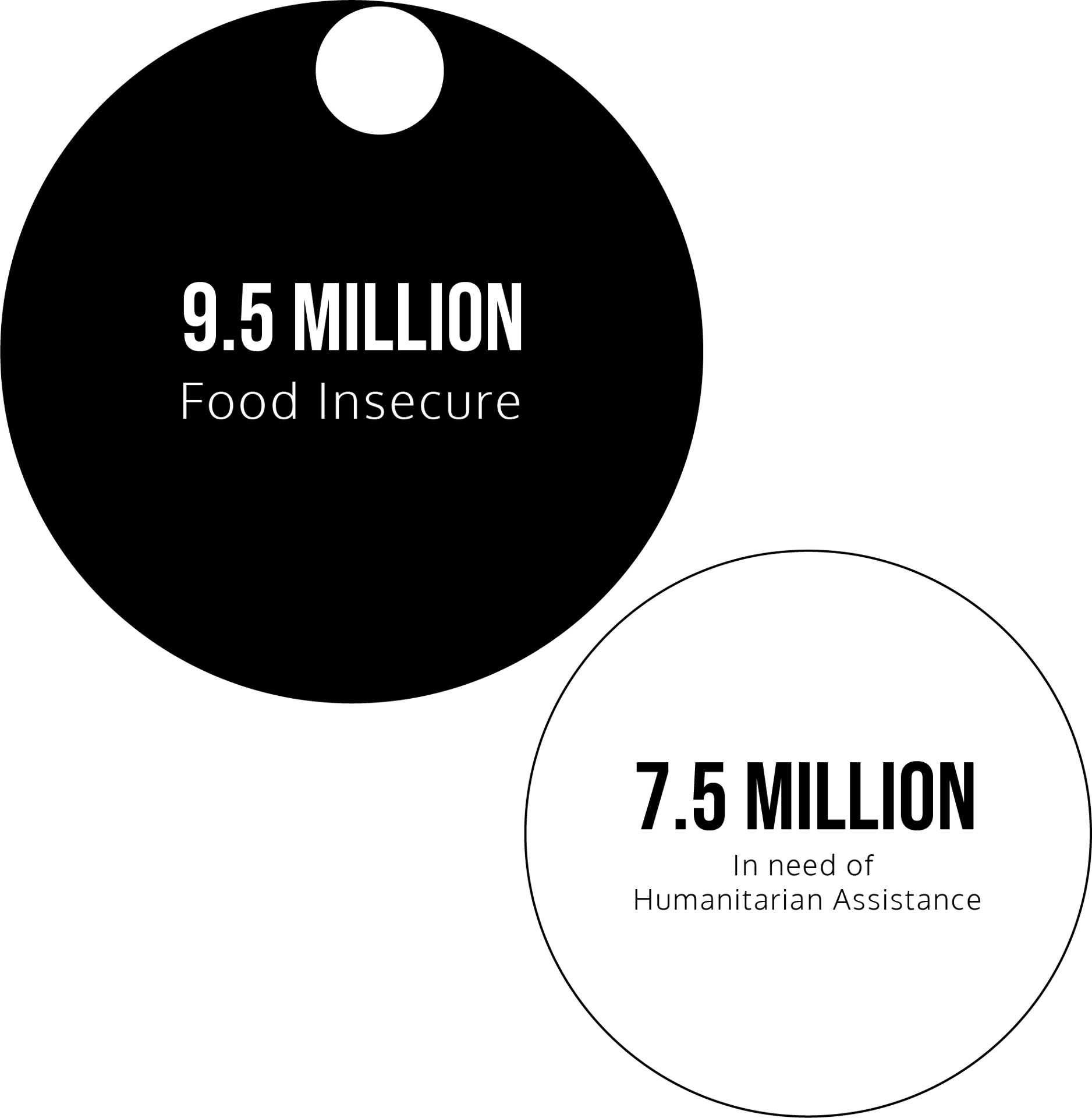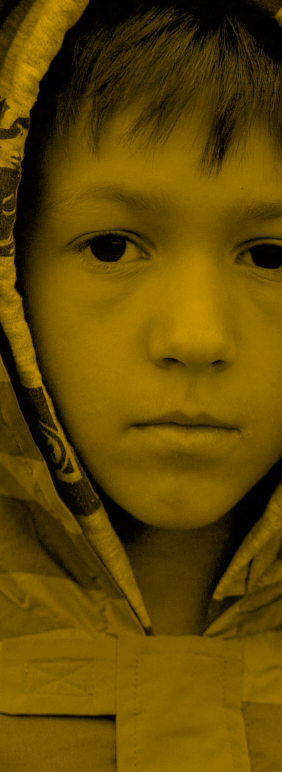Today, over 82.4 million people worldwide are forcibly displaced, and over one third of them, some 26.4 million people, leave their homelands and become refugees.
While you presumably heard of the refugee crisis in Syria or Afghanistan, many might not even realize the humanitarian crisis in Venezuela.
Unlike the former, the Venezuelan exodus is caused not by war or natural disaster, but by the intertwined political turmoil, government mismanagement and collapse of the economy.
The Refugee Crisis

Source: World Vision, UNHCR • Data as of Aug 2021.

5 biggest refugee crisis
The shortage of fuel, dire lack of food and necessities, and soaring unemployment, among many other problems, have forced over 5.7 million people, out of the 30 million population, to flee their country in search of a shelter.
In fact, the Venezuela refugee crisis is the second biggest migration crisis, just after Syria, which topped the refugee list with 6.8 million people.


VENEZUELAN Fleeing to?
Where arE
Venezuelans are fleeing to countries all across Latin America and the Caribbean with the vast majority finding refuge in Colombia, Peru and Ecuador.
Approximately 1.7 million Venezuelans have fled to Colombia, the top hosting country. Peru is covering another 1 million, followed by Chile and Ecuador, home to 450,000 Venezuelans each.

TRAPPED in the COUNTRY?
WHAT ABOUT THE PEOPLE



The United States Agency for International Development (USAID) published a new fact sheet about Venezuela in June 2021. The report stated that 7.5 million people are in need of humanitarian assistance and 9.5 million are food insecure in the country.
According to the National Survey of Living Conditions, published by researchers at Andrés Bello Catholic University in Caracas, 3 in every 4 Venezuelan live in extreme poverty. The World Bank defines “extreme poverty” as living on less than $1.90 per person per day.
WHAT is HAPPENING in VENEZUELA?

Once one of the richest nations in Latin America thanks to its massive oil reserve, Venezuela has been in the midst of a severe socio-political and economic crisis since 2014. Here we breakdown a few critical reasons behind the chaos.
Nicolás Maduro and Juan Guaidó.
POLITICAL SHOWDOWN BETWEEN
The government of president Nicolás Maduro was first elected in April 2013, and re-elected to a second 6-year term in May 2018 in a highly controversial poll widely seen as rigged. The opposition leader Juan Guaidó from the National Assembly declared himself the acting president in January 2019 by using a constitution provision, yet he does not have any administrative power.
More than 50 countries, including the U.S. and many in Latin America, recognized Mr Guaidó as the legitimate president, whereas Russia and China, among others, stood by President Maduro. The U.S. has also imposed sanctions on Mr. Maduro, his inner circle and a network of oil trading firms since 2017 in hopes of cutting the financial sources of the government.

The fall of the petrostate
The long-time dependence of the nation’s economy on oil left the country vulnerable to fluctuations of the commodity price. OPEC data shows oil exports accounted for 99% of the nation’s total export revenue, and 35% GDP in 2018.

The oil price tumbled from $97.5 per barrel - when Mr. Maduro assumed his presidency - to a mere $34.7 per barrel in 2016, the lowest in more than a decade.
Despite modest recovery of oil price - $80 per barrel in October 2021, oil production in Venezuela, which holds the world’s largest oil reserves, has plunged as a result of mismanagement and corruption, falling from 2.4 million barrels a day in 2013 to a historic low of 0.34 million barrels a day in 2021.
The petrostate is ironically facing the shortage of fuels and electricity, along with food insecurity and inadequate healthcare resources.

THE NIGHTMARE OF HYPERINFLATION

The persistent deficit spending, unstoppable money printing and failure in price control policy are just examples of the complexity, but they all point to the government’s ineptitude, leading Venezuela down the road to hyperinflation.
The International Monetary Fund (IMF) forecast that inflation of Venezuela topped 1 million percent in 2018, but the organization has stopped publishing the projections due to the lack of official data. Yet, the price of a cup of coffee, measured using Bloomberg’s Café Con Leche Index, could give us a sense of the hyperinflation crisis.
The index tracks just one item: a cup of coffee served piping hot at a bakery in eastern Caracas. The price has jumped from 0.35 bolivars to 7.96 bolivars over the past 12 months, a surge of 2,174 percent.

The freefall of Venezuela’s economy


85
%
According to IMF’s estimates, Venezuela’s economy has shrunk by 85% since 2010, the largest contraction seen outside of war in the recent decades.

How is the world responding to the Venezuela crisis?
Although Venezuela is only second in the world to Syria in terms of external displacement, there remains a massive gap when it comes to international attention and funding support, as compared to other modern crises.

While most regional countries have been generous in accepting Venezuelans, pushback to these migrants has occurred in some countries thanks to the rapid influx of refugees and the resulting stretch of public resources, and covid has exacerbated the situation.
Similarly, the Biden administration also announced in March 2021 that the government will offer temporary protective status to the 320,000 Venezuelans already residing in the US.
US

In February 2021, Columbia took an unprecedented step by granting a 10-year protection status to the 1.7 million displaced Venezuelans, of which around 1 million did not have any regular status, enabling them to work legally and access healthcare services including the covid vaccine.
Columbia
According to the Brooking Institution, total funding per refugee in Syria amounted to $3,150 in 2020, which is over 10 times that of Venezuela, with $265. Refugees of South Sudan - the 4th largest exodus - also received $1,390 on a per capita basis.
Even if the 2021 UN appeal is fully met, the total funding support for the Venezuela refugee crisis would reach $3 billion, translating into $600 per person, which still remains significantly lower than their counterparts. Looking into the funding trend of the 3 modern crises, we can easily find out how the Venezuela crisis is severely underfunded.

Chile, another neighborhood, has even changed its stance from acceptance to deportation. The new law set in April 2021 induces that any migrants who entered the country through unauthorized means could be arrested and deported.
Peru, for instance, tightened the migration rules in June 2019 by instituting passport and visa requirements, which essentially blocked the entry of Venezuelans who cannot afford the fees.
The intertwined political, economic and humanitarian crisis in Venezuela is already standing at a tipping point. There are no simple and quick solutions to the catastrophe, but the international community has to step up and put it as a top global agenda.
Global coordination, integration and investment in not only Venezuela but also the hosting nations are all urgently needed to ease the crisis and help the millions of people to rebuild their lives and future.
We can all play a part, whether by a small donation, or as simple as raising the awareness of the event to others.
Copyright © Chartipedia
Share this scrolly-telling page to your friends!





